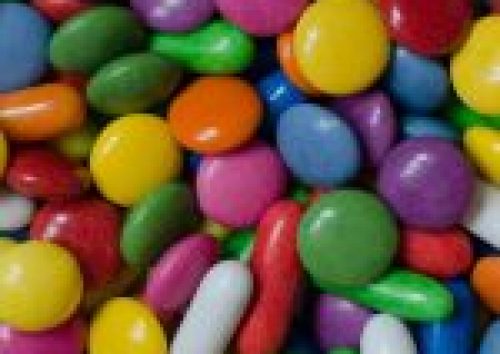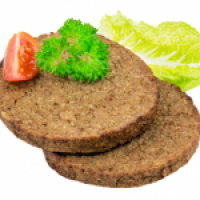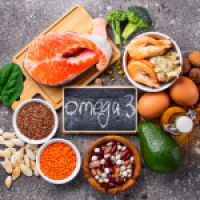Simple Steps to Break Your Sugar Addiction

You may not know it, but you are an addict. Like most Americans, you suffer from sugar addiction. Fortunately, it is possible to break your sugar addiction.
Signs of Sugar Addiction
Do you crave sweet things? Do you ever lose control of your appetite and eat far more than you intended? Do you ever find yourself eating tons of other food to satiate your hunger, but you never seem to feel content until you eat that chocolate bar or drink that soda that you really want? Have you ever felt powerless over your ability to control your eating?
All of these are signs that you need to break your sugar addiction. Before we talk about how to beat your sugar addiction, it’s important to know how we got addicted in the first place.
Why Do We Become Addicted?
Our brains consume a lot of energy (glucose), which it takes out of our bloodstream. Glucose is the simplest form of sugar, and it comes from carbohydrates or “starchy” foods. Depending on the type of carbohydrate we consume, glucose may be readily available to us or it might need to be broken down first into glucose before our bodies can use it.
When we eat foods that contain pure glucose or can be converted very quickly to glucose, our brain thinks that is being supercharged with energy. We feel amazingly energetic, and our brain rewards us by releasing tons of dopamine, a feel-good hormone.
Why Beating Sugar Addiction is So Hard
Through dopamine release, our brain conditions us to consume more sugar by rewarding us each time we do it – like a rat getting a treat for pushing a button. Eating sugar equals feeling great. These “reward circuits” in our brain become hard-wired, and that is how we become addicted.
When I say you need to break your sugar addiction, I’m not using this as an analogy. I mean it literally. Studies have shown that the pathways created in our brains for sugar addiction are the same ones found in drug and alcohol addiction. So, if you feel powerless against beating your sugar addiction, there is a good physiological reason.
Getting High from Sugar
“Sugar highs,” or rapid rises in blood sugar, happen when we consume lots of simple carbohydrates that can be broken down rapidly into glucose. Simple carbohydrates are found in candy, soda, table sugar as well as in highly refined starches like pasta, bagels, crackers, and white bread. Chips, potatoes, and rice are other sources of simple carbs that can cause sudden blood sugar spikes.
Not all carbohydrates cause a sugar high. Some simple carbohydrate sources like fruits and vegetables do not break down as rapidly due to their fiber content. This slows the release of glucose into your body, keeping it at a more even (and healthy) level.
Bottoming Out
When your body senses a lot of available glucose, it produces insulin to allow glucose in the blood to enter cells to give them energy. When you eat a well-balanced meal, the body produces just about the right amount of insulin to store excess glucose and leave a little bit floating around in your blood.
If you eat very sugary foods, your body goes into an emergency state, producing much more insulin than usual to bring your blood sugar down. High blood sugar can kill you, so if your body senses a rapid rise in blood sugar, it kicks out tons of insulin to deal with it as quickly as possible.
The problem occurs when the glucose is mostly used up and there is not enough floating around in your bloodstream. This low blood sugar level is known as hypoglycemia. Hypoglycemia is often felt because you tend to get “the shakes.” You may also become quite irritable during periods of low blood sugar. When you beat your sugar addiction, these symptoms disappear.
Your brain interprets hypoglycemia (low blood sugar) as a need to find another quick source of fuel to quickly raise blood sugar levels back to normal. As a result, you may crave sweet foods like candy bars or sodas because your brain knows they will quickly raise blood sugar levels.
The problem is that your blood sugar level spikes rapidly when you consume that candy bar or soda. Dopamine (the feel-good hormone) is released, reinforcing the habit in your brain that instant sugar is good. This begins the cycle all over again. To break your sugar addiction, we have to interrupt that cycle and retrain our brains.
How to Break Your Sugar Addiction – Getting Started
Now that we know about the sugar addiction cycle let’s look at what you can do to beat your sugar addiction.
The best advice for breaking your sugar addiction is don’t change too much too fast. If you try to get off of sugar overnight, you will feel terrible and likely not stick to your diet change. Remember that this will be a process, and be happy with your progress, even if it sometimes seems small.
Begin slowly by substituting some, but not all, sugar with naturally sweet foods such as fruit. Berries are good places to start because they are very sweet, and most people already like them, so there is a good chance that you will, too.
Fruits contain sugar, but when you eat the whole fruit (not just the juice), the fruit’s fiber slows down the body’s sugar metabolism. That way, you get a really sweet flavor, but the body doesn’t go into insulin-producing overdrive when you consume it.
Read Labels to Beat Your Sugar Addiction
The next time you go to the store to buy sugary cereal or oatmeal, choose one that has no sugar. Be certain to read the label to determine what the actual sugar content in a product is instead of relying on what the front of the box leads you to believe. Just because a product may be labeled “all-natural” does not mean it is either free of sugar or healthy.
I’ve picked cereals as one of my main examples for this article because they are a very popular food, and the amount of sugar contained in most cereals is truly staggering. Many cereals on the market have more than 50% sugar by weight, according to Time Magazine. No wonder everyone is trying to beat sugar addiction.
The only way you will know for sure how much sugar is in a product is to read the ingredients list. If you are having a hard time finding a product with low sugar, make sure that it is not listed in the first 5 ingredients.
Manufacturers must list ingredients in order to indicate the relative amounts of ingredients in their products. The further you get to the end of the list of ingredients, the less of that ingredient there will be. So, if item #2 is sugar, give it a pass. If the 10th item is sugar, however, that is not nearly as bad.
Be sure to avoid getting things that are labeled “sugar-free” as these contain artificial sweeteners and can be even worse for you and make t0 harder to break your sugar addiction.
Making Good Alternative Choices
Let’s get back to our example of buying oatmeal. Plain “old fashioned” oats in a great big container contain no sugar at all and are so much cheaper than the ones that come in little packages and are full of sugar. Saving money is always a good thing, right?
If you are used to really sugary oatmeal or cereals, plain old regular oats are probably not going to do it for you. To improve the flavor begin by adding in some fruit to your unsweetened oatmeal or cereal. Many people enjoy berries in their oats and cereal, so start there. If those aren’t your favorite fruits, try apple or ripe pear. Remember that the riper the fruit is, the sweeter it will be.
As fruit ripens, enzymes are breaking down less sweet starches into simple sugars. Some people don’t care much for the consistency of riper fruit, but if you eat it in your oatmeal or cereal, you might not notice it as much. Experiment and figure out what you like best.
You will probably find initially that you will want to add sugar to your cereal or oats because the fruit isn’t likely going to be sweet enough. That’s fine to start. You aren’t going to beat your sugar addiction in a single day.
In order to figure out the minimum amount of sugar you need to start, add your fruit first and then take a bite. Get a feel for how much extra sweetness you need to make you happy. By taste testing you don’t have to guess at how much sugar to add to begin, so you can start with the least amount necessary.
As you add sugar, taste after every teaspoon and count them. Then, every day, reduce that amount of sugar by a bit – like a quarter (1/4th) of a teaspoon. This probably won’t be enough to notice taste-wise. If you reach a point at which it no longer tastes sweet enough, stay there for a week or so before reducing the amount of sugar again. You may also tinker with the amount or type of fruit you are adding to make your cereal or oatmeal taste sweeter.
Add Protein, Fat, & Fiber
One very important strategy to successfully break your sugar addiction is to make sure that whenever you eat a carbohydrate to always accompany it with a protein, a fat, or a fiber. Proteins, fats, and fiber help to slow the digestive process. This means that even if you eat something that has sugar in it, you can curb the sugar spike in your blood. If you can stop the sugar spike, you can minimize the dopamine released, reduce the probability that you will bottom out from hypoglycemia shortly thereafter, and ultimately get you closer to your goal to break your sugar addiction.
Try Using Alternative Sweeteners
Another way to cut out the sugar is to begin to substitute it with xylitol. Xylitol is a substance found naturally in many plants. There are no harsh chemicals like you would find in artificial sweeteners like sucralose or aspartame. Most supermarkets don’t carry xylitol, but you can likely find it at a local health food store – sometimes in bulk.
Xylitol is commonly used in chewing gum and mints because it helps to fight tooth decay. You can use it just like you would sugar in a 1:1 substitution. The taste is almost indistinguishable from sugar.
A word of caution, though about using xylitol: don’t get all gung-ho about swapping it for sugar in one day. Some people can experience some gastric upset from xylitol, so start exchanging it a little at a time until you know how your body will respond. Some people notice no effect, but it is worth mentioning.
Stevia is also a popular healthy sugar alternative. It is very sweet and appeals to many people, but some people detect an aftertaste. Give it a try and see what you think. Stevia’s big advantage is that it has almost no calories, whereas xylitol has 40% fewer calories than sugar.
Replacing Other Foods
So far we have just talked about oatmeal and cereal. What about all of the other foods we eat that contain sugar? Don’t we need to address all of those other foods if you are going to break your sugar addiction?
Sugar is in almost all processed foods we eat. Ideally, if you want to be healthy, you will try to get away from processed food altogether. However, this is not a realistic goal for most of us since we live such hectic lives.
You can replace as much processed food as you can over time – one item at a time – with whole foods. By doing this slowly, you can make amazing health changes while eliminating sugar.
But, what about the processed food that we refuse to give up? We all have vices. Mine happens to be a particular brand of really spicy hummus. I just prefer this one hummus to what I make myself. Perhaps I need to keep trying.
When you just can’t let go of processed food, compare all available options. There are usually a wide variety of options of any processed food. Start reading labels and comparing. Choose the ones that have less sugar – or better yet, no sugar! Try new varieties. Sure, you might run across some you don’t like, but you can also find others that you might like even better.
Supplements to Help Lower Blood Sugar
certain supplements may offer additional support in controlling blood sugar levels. One such supplement is chromium. Chromium is a trace mineral that plays a vital role in carbohydrate and lipid metabolism. Studies suggest that chromium supplementation can improve insulin sensitivity, leading to better blood sugar control. It may also help reduce insulin resistance, a common issue in type 2 diabetes.
Another supplement that has gained attention for its potential blood sugar-lowering effects is alpha-lipoic acid (ALA). ALA is a powerful antioxidant that has been shown to improve insulin sensitivity and reduce oxidative stress in cells. Some research indicates that ALA supplementation can lead to reductions in fasting blood sugar levels and improve insulin function, making it a promising adjunct therapy for diabetes management.
Additionally, berberine, a compound found in several plants, including goldenseal and barberry, has demonstrated significant potential in lowering blood sugar levels. Berberine works by activating an enzyme called AMP-activated protein kinase (AMPK), which helps regulate glucose uptake and metabolism in cells. Studies have shown that berberine supplementation can lead to reductions in fasting blood sugar levels and hemoglobin A1c, a marker of long-term blood sugar control.
Your Taste in Food Will Change
It’s hard to believe this, but once you break your sugar addiction, sugary foods actually will start to taste bad to you. This does not happen immediately, and certainly won’t be the case if you are still consuming some very sweet items now and again – such as a cola or donut.
Once you have broken your sugar addiction and have been off of sugar for a couple of months, if you were to take a sip of cola or a bite out of a donut, you would find it to be sickly sweet and unappetizing. Difficult to imagine, right? It is actually common for people who have beat sugar addiction to make such comments. They wonder how they ever believed that foods that sweet tasted good to them.
This phenomenon happens because taste buds adapt to what they are being fed. That is how you got hooked on sugar in the first place. Think of getting off of sugar as just an exercise in retraining your tastebuds. Before you know it, not only will you be eating far less sugar, but you will be well on your way to eliminating sugar altogether from your diet and having broken your sugar addiction.




